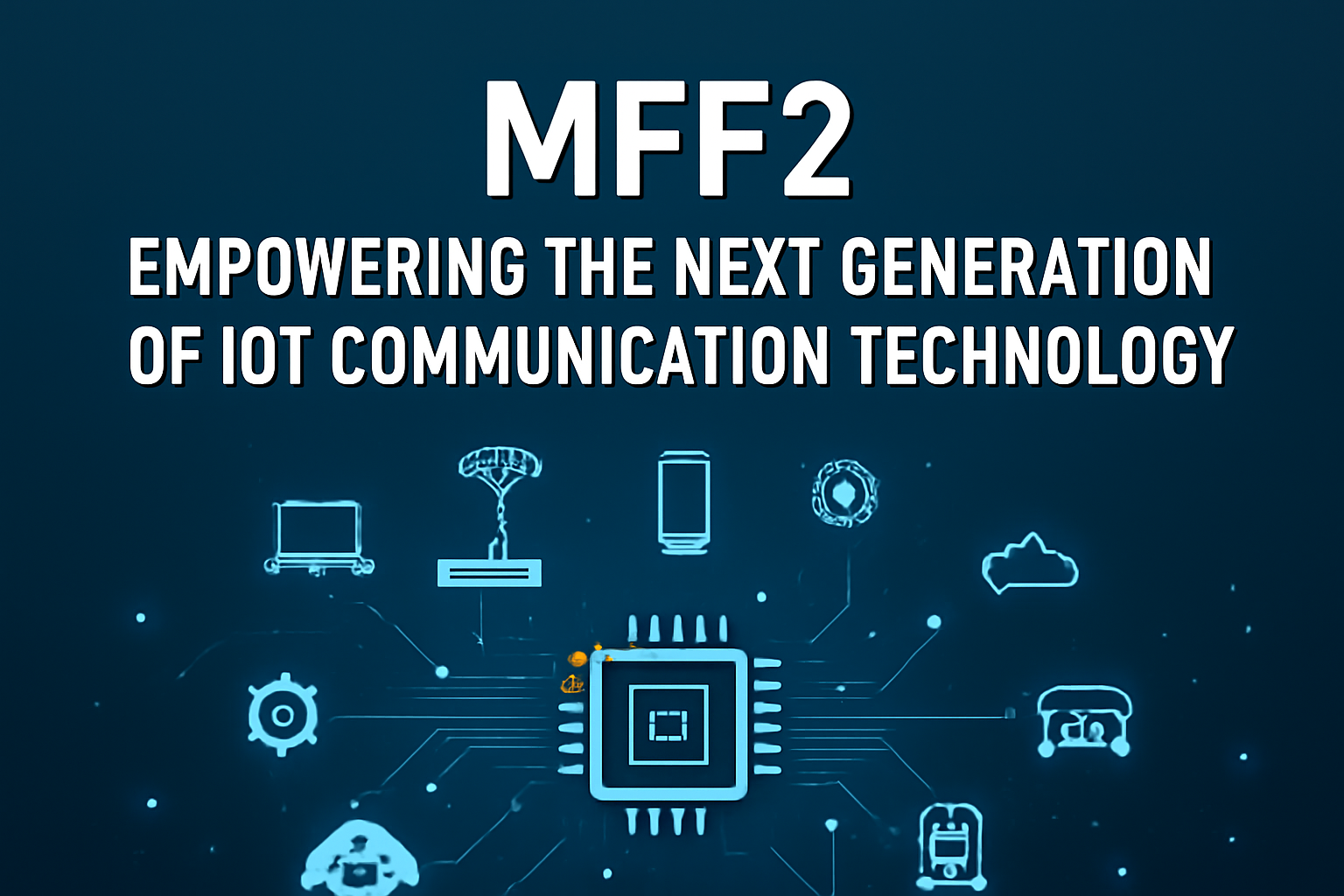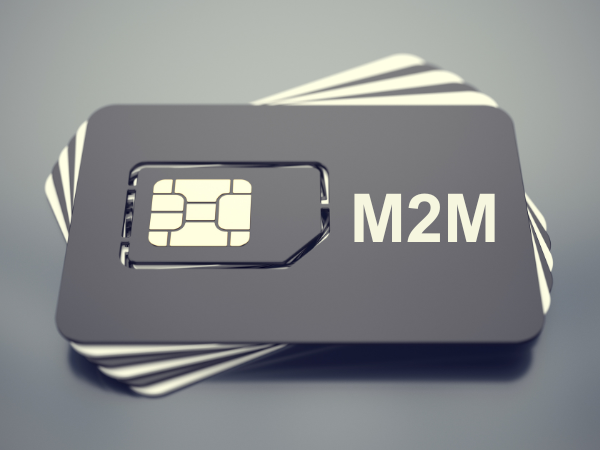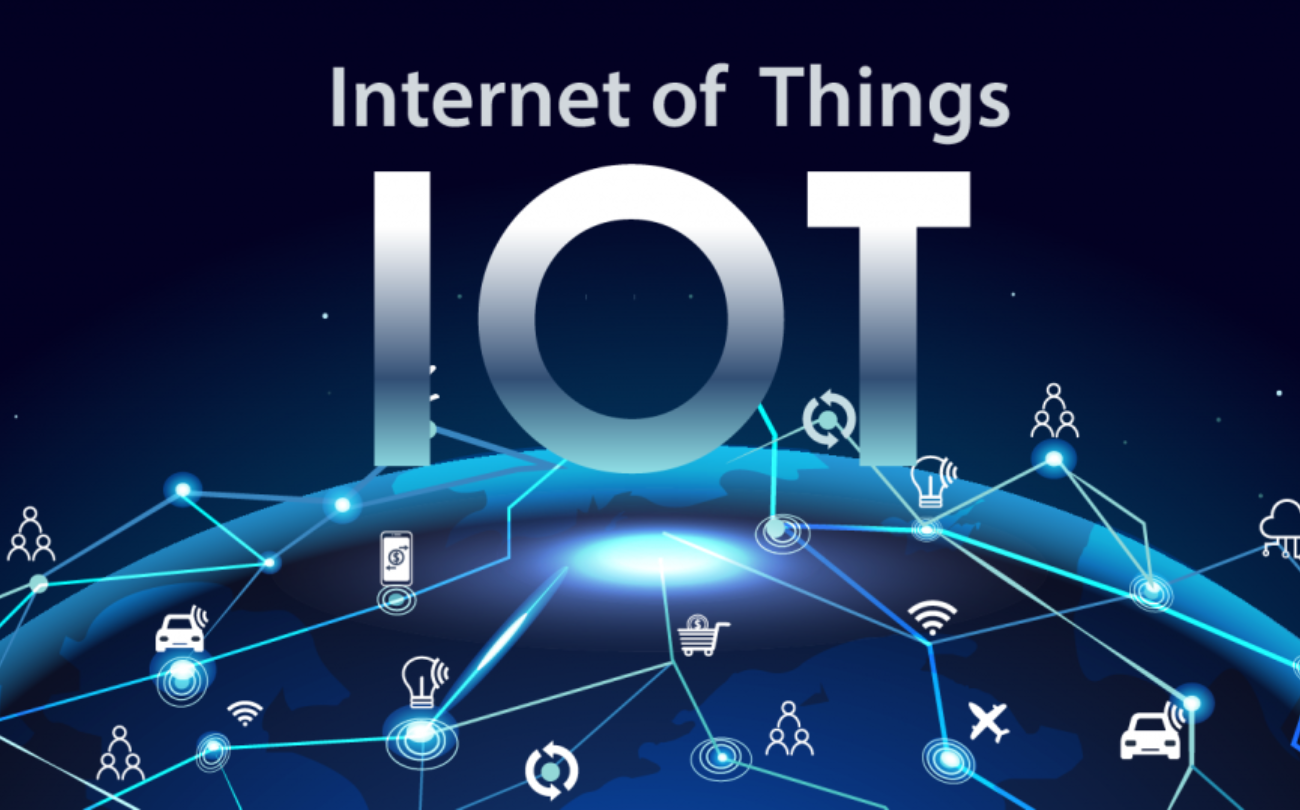The Internet of Things (IoT) is transforming industries worldwide, connecting devices, systems, and infrastructure to create smarter, more efficient ecosystems. As IoT technologies continue to evolve, the demand for faster, more reliable, and energy-efficient communication protocols has intensified. In this context, MFF2 (Machine-to-Machine Future Fusion 2) has emerged as a powerful next-generation communication technology, promising to address many of the challenges faced by IoT systems today.
In this blog, we will explore the key features of MFF2, how it enhances IoT communication, its application in various industries, and why it is set to become the cornerstone of IoT networks in the near future.
What is MFF2 Communication Technology?
MFF2, or Machine-to-Machine Future Fusion 2, is a cutting-edge communication protocol designed to optimize machine-to-machine (M2M) interactions and data transfer in IoT ecosystems. The technology is designed to provide low-latency, high-speed communication while ensuring minimal power consumption. It achieves this by integrating multiple communication technologies, including low-power wide-area networks (LPWAN), 5G, Wi-Fi, Bluetooth, and satellite connectivity.
As IoT networks become more complex, the ability to support billions of devices in a scalable and efficient manner is crucial. MFF2 offers a robust solution by providing a flexible communication layer that ensures seamless connectivity between IoT devices across various networks and environments.
Key Features of MFF2
1. High-Speed Data Transfer & Low Latency
MFF2 is designed to handle high-throughput data transfers with minimal delay. This is crucial for applications that require real-time communication, such as autonomous vehicles, smart cities, and remote healthcare systems. The protocol ensures that even in highly demanding environments, data is transferred instantly without compromising performance.
2. Energy-Efficient Design
Energy efficiency is one of the defining features of MFF2. IoT devices, especially those operating in remote or hard-to-reach locations, require low-power communication solutions. MFF2’s low-power design significantly extends the battery life of IoT devices, making it ideal for applications in environmental monitoring, smart agriculture, and asset tracking.
3. High Interoperability
MFF2 is designed to be compatible with a wide range of IoT devices and communication technologies. Whether the device is using cellular, LPWAN, or Wi-Fi, MFF2 ensures that the devices can communicate seamlessly. This high interoperability makes MFF2 a go-to choice for IoT networks that require flexibility and scalability.
4. Scalable & Future-Proof
One of the most significant advantages of MFF2 is its ability to scale efficiently. As the number of IoT devices continues to rise, the protocol can easily accommodate billions of devices without compromising network performance. Additionally, MFF2 is future-proof, designed to evolve with upcoming advancements in communication technologies, ensuring long-term viability.
5. Multi-Network Fusion
Unlike traditional communication protocols that are limited to a single network, MFF2 can fuse multiple network technologies. It can dynamically switch between various communication networks, such as 5G, LPWAN, Wi-Fi, and satellite, depending on the environment. This ensures consistent and reliable communication, even in areas with limited or fluctuating network coverage.
How MFF2 Enhances IoT Communication
1. Seamless Integration of Diverse IoT Networks
As IoT applications diversify, the need for different types of networks to work together becomes more critical. MFF2’s ability to integrate a wide variety of network technologies ensures that devices can remain connected across different environments. Whether an IoT device is in an urban area, rural farm, or remote industrial site, MFF2 guarantees seamless communication and data transfer.
2. Real-Time Data Processing
In industries like autonomous driving and remote healthcare, real-time communication is essential. MFF2 ensures low-latency communication, allowing data to be processed and acted upon almost instantly. This is crucial for applications like smart traffic systems, real-time monitoring of patient health, and industrial automation.
3. Optimized for Edge Computing
MFF2’s ability to support edge computing is one of its standout features. By enabling data processing closer to the source (i.e., at the edge of the network), MFF2 reduces the need for constant communication with the cloud, reducing latency and bandwidth usage. This is particularly valuable in environments where real-time data analysis is required.
The Role of MFF2 in IoT SIM Cards
IoT SIM cards are the backbone of many connected devices, providing them with the necessary network access to send and receive data. However, as IoT networks expand, traditional SIM cards based on 2G, 3G, and 4G technologies face limitations, such as high power consumption, limited bandwidth, and lack of flexibility for large-scale IoT applications. MFF2 technology overcomes these challenges by providing enhanced connectivity and adaptability for IoT SIM cards.
1. Low-Power Communication with MFF2 IoT SIM Cards
One of the key challenges in IoT applications is power consumption. Many IoT devices, such as environmental sensors, smart meters, and wearable health devices, require long-lasting battery life. MFF2-enabled IoT SIM cards are designed with low-power communication capabilities, ensuring that devices can operate efficiently without frequent battery replacements.
The low-power wide-area network (LPWAN) technologies integrated into MFF2, such as NB-IoT (Narrowband IoT) and Cat M1, offer ultra-low power consumption while still enabling long-range communication. These technologies allow IoT SIM cards to support devices that need to remain connected for long periods, whether in remote areas or harsh environments where regular charging is not feasible.
2. Seamless Multi-Network Connectivity
One of the standout features of MFF2 is its ability to connect to multiple network types, providing uninterrupted communication regardless of network conditions. Traditional IoT SIM cards are often limited to a single network, such as 2G, 3G, or 4G, which can be restrictive, especially in areas with patchy network coverage or high traffic.
With MFF2 technology, IoT SIM cards can switch between different networks based on availability, ensuring that devices remain connected at all times. For example, an IoT SIM card with MFF2 might use 5G for high-speed data transfer in urban areas and switch to LPWAN in rural areas where 5G coverage is not available. This multi-network approach ensures reliability and consistent communication, regardless of location.
3. Enhanced Real-Time Communication and Low Latency
For many IoT applications, particularly in fields like autonomous vehicles, healthcare, and industrial automation, low-latency communication is crucial. MFF2-enabled IoT SIM cards enable real-time communication by providing faster data transfer speeds and reduced delay times. This is achieved through the integration of advanced cellular technologies, including 5G and edge computing capabilities, which allow data to be processed closer to the source, reducing the need for long-distance data transmission.
For example, in smart cities, MFF2-powered IoT SIM cards allow devices such as traffic sensors, surveillance cameras, and autonomous vehicles to communicate with each other in real-time. This ensures the smooth operation of systems like traffic lights, public transport scheduling, and emergency response systems.
4. Scalability and Support for Large-Scale IoT Deployments
As the number of IoT devices continues to grow, scalability becomes a key concern for businesses looking to deploy large-scale IoT networks. Traditional IoT SIM cards, which rely on 2G or 3G networks, often face challenges in handling large numbers of simultaneous connections due to bandwidth limitations and network congestion.
MFF2 technology allows IoT SIM cards to scale seamlessly, supporting billions of connected devices without compromising on performance. This is achieved through technologies like NB-IoT and Cat M1, which are designed for high-density environments and can support thousands of devices within a single cell. These technologies enable IoT SIM cards to handle massive amounts of data and ensure efficient network management.
5. Security and Data Protection
Security is a top priority for IoT networks, as devices are often collecting and transmitting sensitive data. MFF2 ensures that IoT SIM cards are equipped with advanced security features to protect data and maintain privacy. The integration of encryption and secure authentication protocols helps protect devices from potential cyberattacks and unauthorized access.
Moreover, the ability of MFF2 to seamlessly switch between different networks allows for the implementation of multi-layer security, ensuring that IoT devices are protected regardless of the network type they are using. This is especially important for industries such as healthcare, where patient data and personal information need to be kept secure at all times.
MFF2 vs. Traditional IoT Communication Technologies
While existing IoT communication protocols such as 4G, 5G, and LPWAN have served the industry well, MFF2 offers several advantages over these traditional technologies:
- Speed and Latency: Unlike LPWAN, which offers low speeds and latency, MFF2 delivers faster data transfers with minimal delays, making it suitable for real-time applications.
- Energy Efficiency: While 5G offers high-speed communication, MFF2 is designed to be energy-efficient, making it ideal for low-power devices that need to run for long periods without frequent recharging.
- Multi-Network Compatibility: Traditional technologies are often limited to a single network type (e.g., 4G or Wi-Fi), but MFF2 can seamlessly switch between different networks based on availability, ensuring uninterrupted communication.
Challenges and Future of MFF2
1. Standardization and Adoption
While MFF2 holds immense potential, its widespread adoption will depend on industry-wide standardization. The ability to interoperate with existing IoT networks and devices is crucial for its success. As manufacturers and service providers begin to embrace the technology, MFF2 will likely become a standard in the IoT ecosystem.
2. Security and Privacy
As with any emerging technology, security concerns will play a significant role in the adoption of MFF2. Ensuring that data transmitted over MFF2 networks remains secure and protected from cyber threats will be crucial for industries like healthcare and autonomous vehicles, where data privacy is paramount.
3. Integration with Existing Networks
One of the biggest challenges of MFF2 will be its integration with existing network infrastructure. Ensuring that devices using MFF2 can communicate with those operating on older IoT protocols will require robust compatibility solutions and smart gateways.
Why MFF2 Is the Future of IoT Communication
MFF2 represents the future of IoT communication. With its ability to handle high-speed, low-latency communication while maintaining energy efficiency and multi-network compatibility, MFF2 addresses the challenges faced by current IoT technologies. Its flexibility and scalability make it the ideal solution for industries that require a reliable, cost-effective, and future-proof communication protocol.
As IoT continues to grow, MFF2 will play a critical role in enabling smarter cities, autonomous vehicles, industrial automation, and healthcare systems. The widespread adoption of MFF2 will pave the way for a more connected, efficient, and intelligent world.
If you are looking to integrate MFF2 into your IoT applications, or if you want to explore its potential for your business, contact us today. Our team is ready to help you harness the power of MFF2 to drive innovation and transform your industry.
Get in Touch with Zhongyi IoT for Reliable IoT Communication Solutions
If you’re looking for reliable and efficient IoT communication solutions, look no further than Zhongyi IoT. With years of expertise in the industry, we provide tailored IoT connectivity solutions that help you seamlessly connect devices, collect valuable data, and achieve smarter operations.
Whether you’re in need of cellular connectivity, LPWAN solutions, or IoT SIM cards, Zhongyi IoT offers the right solutions to meet your unique business needs. Our solutions are designed to optimize energy consumption, enhance data transfer speeds, and provide worldwide network coverage.
Don’t let connectivity challenges slow down your IoT projects—reach out to Zhongyi IoT today for a consultation. We’re here to help you take your IoT applications to the next level.
Contact us now to discuss how we can support your IoT communication needs and provide a custom solution that works for you.



